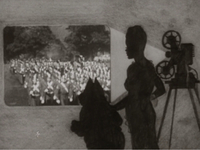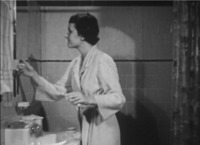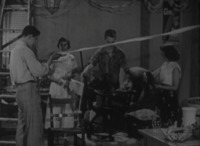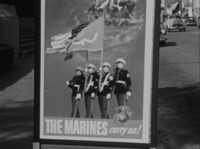Patriotism and the Cold War
Connections between cleanliness, civil service, and patriotism were intricately woven in many social guidance films, perhaps none more apparent than this clip from Johnny Learns his Manners.
Mental hygiene films remain excellent sources for American propaganda during the Cold War. These films document the increased fear of communism, as a primary responsiblity of social guidance films were to emphasize social cohesion and good citizenship. As social guidance scholar Jonathan MacDonald states, re-stabilizing social order through impressing social roles internally and externally of the family unit was seen as directly responsible for a healthy democracy. Further, it was thought that democratic citizenship required training in order to be successful, thus the production of social guidance films and the directing of these films towards teenagers were justified.6 Extensive effort was used to link hygiene to popularity and eventually to being a good citizen.1,5 The insinuation for this was the defining of qualities (i.e., being unhygienic, unpopular, not having dates) to radicals and potential communists. Many school films of the era thusly focused on bathroom shots to illustrate proper hygiene, as is the case in More Dates for Kay. Others made sure to display the seemingly well-adjusted in popular or party atmospheres, like the image below from What to do on a Date. Some films skipped the delicate approach and favored direct displays of military posters (like the beginning of Gossip) or even government film footage of the military (as depicted in the still from Johnny Learns his Manners). The effects of propaganda placement of school children during this time remain undefinable.

While references to the U.S. military were not uncommon in social guidance films, the direct integration of real military footage that Johnny Learns his Manners does at 11 minutes and 18 seconds was unusually direct for the genre.

The correlation of cleanliness and popularity to good citizenship appears in a multitude of social guidance films. This example taken at 3 minutes and 3 seconds into More Dates for Kay would not be out of place in other mental hygiene films.


